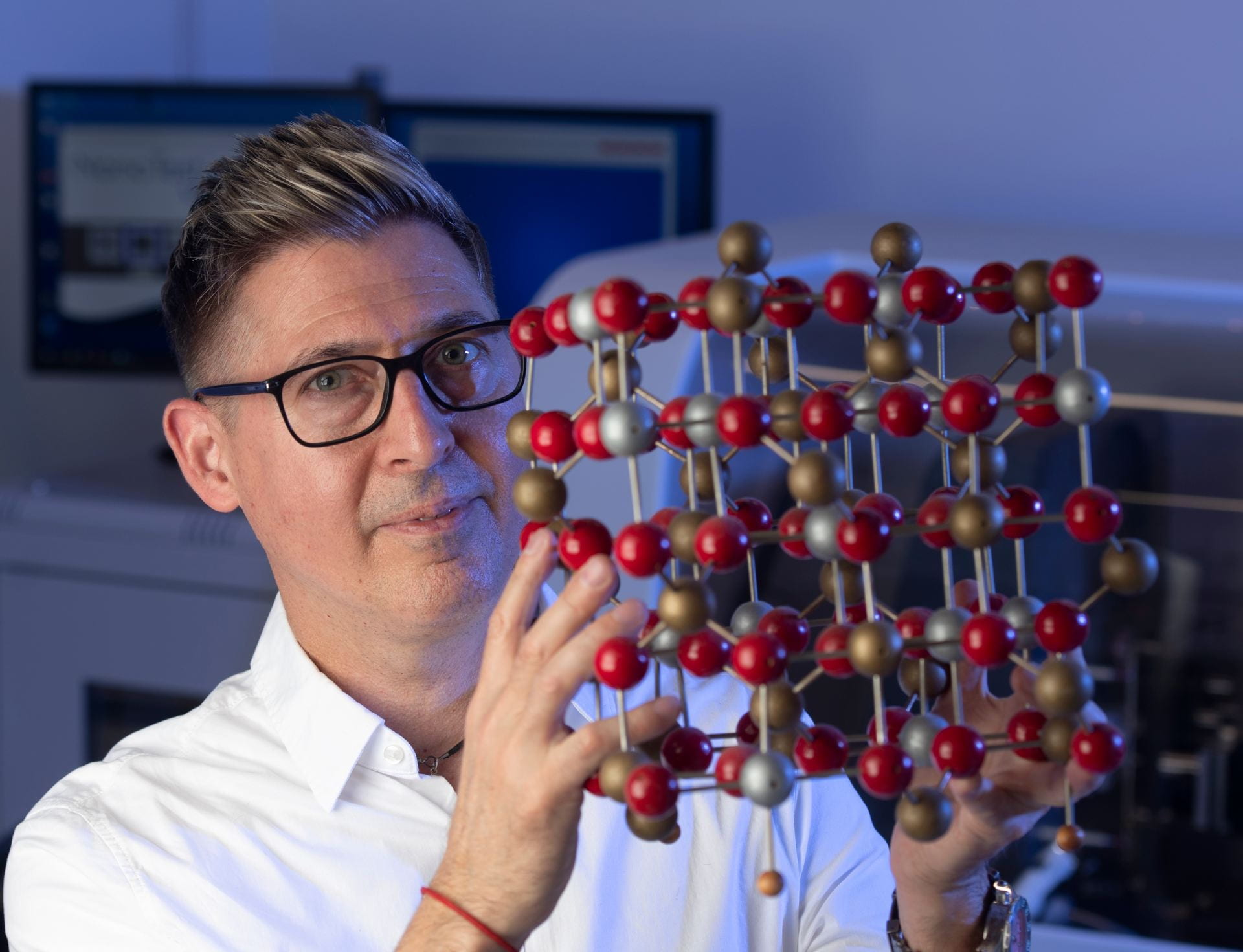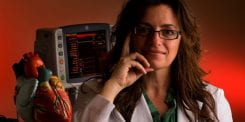Patents pending

They call it “the baby monitor,” but it’s nothing like the ones sold at Babies “R” Us that alert parents when junior’s crying in his crib.
Developed by UC Irvine pediatrics professor Dr. Dan Cooper, the sophisticated wireless device can detect subtle movements in infants that signal increased risk of cerebral palsy, autism and other neurological disorders. It’s outfitted with a sensor created by Pai Chou, UCI associate professor of electrical engineering & computer science, that has a special application to warn of sudden infant death syndrome.
The baby monitor and sensor are just two of many important inventions conceived at UCI. The campus holds 316 active U.S. patents and 360 foreign ones for ideas and products that do everything from quieting jet noise (Dimitri Papamoschou’s Mach Wave Elimination) to restoring hearing (Fan-Gang Zeng’s cochlear implants).
And, no matter which lab or department they originate from, all fall under the careful eye of UCI’s Office of Technology Alliances. The OTA handles the patenting and licensing of the campus’s intellectual property. It helps UCI employees — primarily faculty and graduate students — protect and market their ideas.
“We’re the liaison between the lab bench and the marketplace,” says Doug Crawford, senior licensing officer for UCI. “We also create alliances with companies in the private sector so that campus research has the greatest positive impact.”
The OTA’s seven officers meet frequently with investigators to learn about their latest projects. “It’s fun to see all this great new stuff,” Crawford says, “and how excited the researchers are about what they’ve invented and what their creations can do for people.”
He recently began working on a patent for a wastewater treatment devised by Betty H. Olson, civil & environmental engineering professor. “It’s not the most glamorous invention — it’s a kit for sewage,” Crawford says. “It detects bacteria that bloom in the water early, before it grows out of control and becomes a lot more expensive to treat. Her technology saves both energy and water.”
Dr. J. Stuart Nelson developed UCI’s No. 1 revenue-producing invention, the Dynamic Cooling Device, which boasts more than $40 million in royalties. The attachment allows medical lasers to penetrate deep into the skin without burning, substantially reducing pain.
“It’s great,” Crawford says. “They did a test spot on my hand with the cooling device. Then they used the laser without it, and — ow! — that hurt.” Nelson created the product for treating birthmarks and port-wine stains. Now it’s standard in all kinds of laser procedures, such as tattoo removal and wrinkle reduction.
Other leading inventors at UCI include Hans Keirstead, who holds worldwide patents for his work with stem cells and the regeneration of damaged spinal cords; Frank LaFerla, director of UCI’s Institute for Memory Impairments & Neurological Disorders (UCI MIND), who has pioneered therapies for cognitive disorders; and Jean-Claude Falmagne, professor emeritus of cognitive sciences and creator of a software program called ALEKS(Assessment & Learning in Knowledge Spaces), which helps children develop learning skills.
While benefiting people by advancing healthcare, technology and other fields, inventions also benefit the University of California by generating revenue for further research and education.
Intellectual assets belong to UC. Patent income is divided three ways, with UC receiving 50 percent, the inventor pocketing 35 percent, and 15 percent going to the academic department where the idea originated.
All UCI employees must file a record of invention disclosing their creation to the OTA. In 2010-11, the campus had 180 new ROIs. “We review them for patentability and commercial viability,” Crawford says.
Each licensing officer has a different specialty — such as medical devices, microbiology or engineering — to facilitate the complex patent application process. Some have degrees in law or business. “We’re in each other’s offices on a regular basis,” Crawford notes.
His background is in plasma physics. An inventor himself, he holds patents for electrodeless lighting — an alternative to fluorescent bulbs — which he came up with as a researcher at Lawrence Berkeley National Laboratory.
Once OTA enters into negotiations with a company for licensing an invention, the office must tread carefully.
“We don’t want them sitting on it to protect their own [possibly competing] product,” Crawford says. “We make sure they intend to get our invention out to the broadest market.”
In addition, the office assists faculty in launching startup companies to manufacture an invention, as with the HIPerWall.
The OTA continues to manage and protect UCI patents until they expire 20 years from the date of filing — and sometimes beyond if an idea is still commercially viable.
“We’re here from cradle to grave,” Crawford says.
Originally published in ZotZine Vol. 4, Iss. 1


